Gepatschferner glacier, Austrian Alps

The ice hidden inside Austria’s mountain glaciers is an irreplaceable archive of local climate data.
“There is 6,000 years’ worth of information collected in 12 metres of ice,” says Dr Andrea Fischer, from the Institute for Interdisciplinary Mountain Research in Innsbruck. “Every year, we lose one metre because of climate change.”
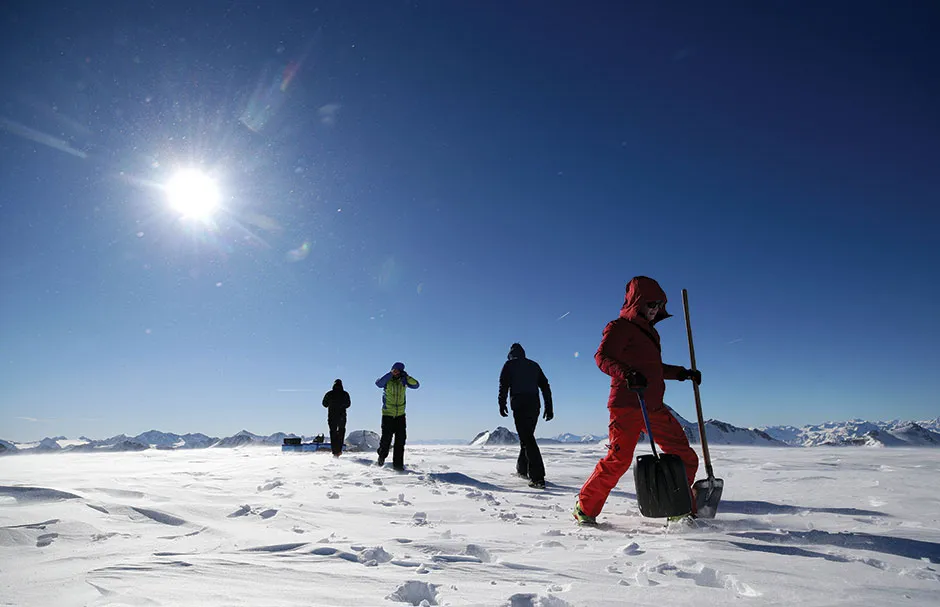
To preserve this precious legacy, Fischer and her colleagues (above) have been drilling ice cores from the Gepatschferner glacier in the Austrian Alps, and then sending them away for storage and study.
“It’s demanding work,” says Fischer. “We have to deal with high elevations and adverse weather. Every one of our team is an experienced mountaineer.”
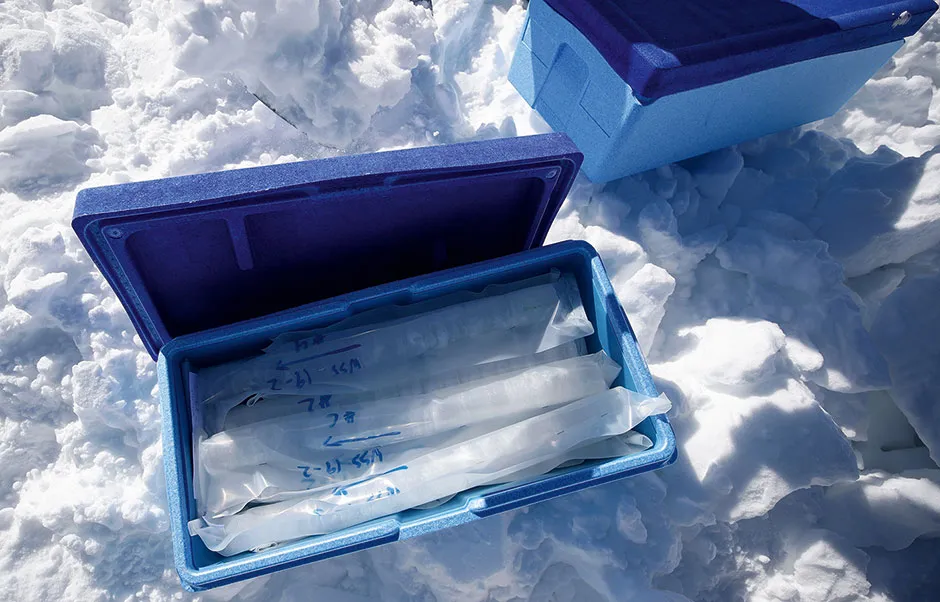
The researchers hope to use the cores to glean information about past plant life, precipitation and human activity, as well as the waxing and waning of the glaciers themselves.
“If we can understand how the landscape recovered from previous bouts of warming, it should help us to prepare for the future,” says Fischer.
Olivares Alfa glacier, near Santiago, Chile
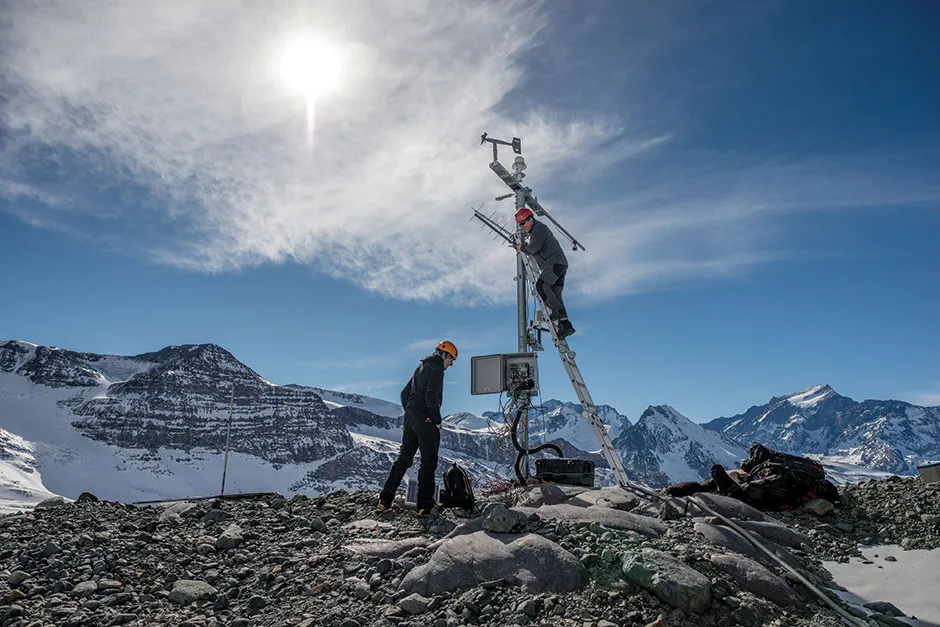
Chile’s glaciers are vitally important: millions of people living in and around the country’s capital, Santiago, depend on nearby glaciers to provide them with water during times of drought.
Now droughts are becoming more common, and the glaciers are melting. Here, glaciologist Dr Gino Casassa (left) and hydroelectrical engineer Diego Gonzalez work at a meteorological monitoring station on the Olivares Alfa glacier, 4,200m above sea level in the Andes Mountains.
It’s mid-winter and the summit should be covered in snow, but the glacier has receded and the duo are standing on bare rock. As director of the Chilean government’s Glaciology and Snow Unit, Casassa is working on an inventory of the country’s glaciers, and trying to protect them from environmental damage.
It’s a race against time. The glaciers are threatened by climate change, drought and mining, and Casassa is concerned that in less than two decades, some of the glaciers will be completely gone.
Sequoia National Park, California, US
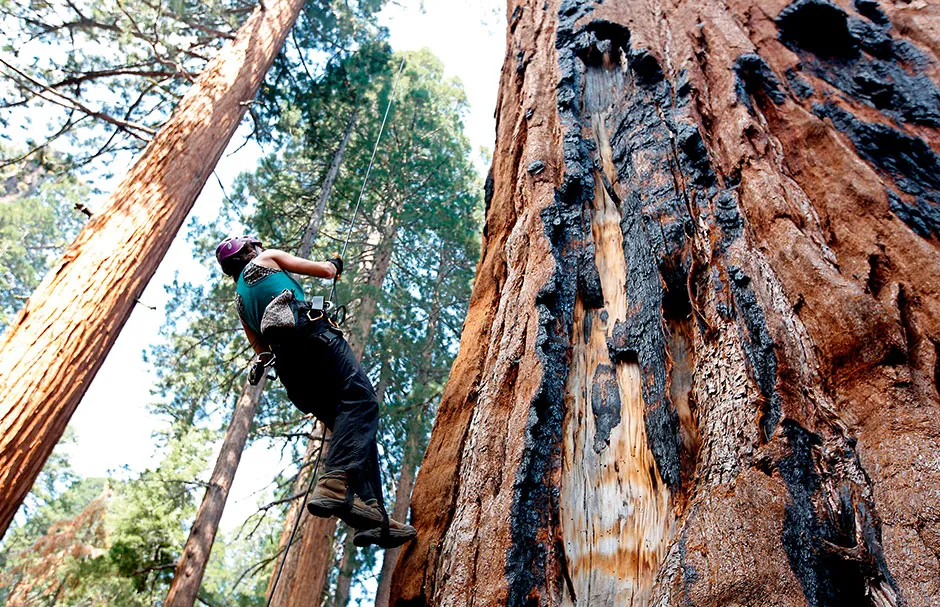
During the 2011-2017 California drought – one of the worst in the state’s history – some of America’s tallest giant sequoia trees began to lose leaves from their crowns.
Armed with long ropes and secure harnesses, Dr Wendy Baxter from the University of California, Santa Cruz (pictured) and colleagues climbed 50 of these trees in the Sequoia National Park to retrieve leaves from the top and find out what was going on.
“It was gruelling work,” says Baxter. The trees are up to 89 metres tall, and samples have to be collected twice daily over a number of years. “We found that the foliage loss was a good strategy used by these trees to reduce their need for water.”
So for now, at least, these trees are relatively safe, but Baxter points out that all organisms have their limitations. “These trees require enormous amounts of water,” she cautions. “I’m concerned that if we don’t address climate change, they may not survive into the distant future.”
Moorea, South Pacific Ocean

A diver surveys the coral reef off the island of Moorea in French Polynesia. In 2019, these corals suffered a major bleaching event as warming waters prompted them to expel the colourful, nutrient-providing algae that normally live inside them.
Some of the coral, however, were unaffected, and marine biologist Dr Laetitia Hédouin from the Centre for Island Research and Environmental Observatory (CRIOBE) in Moorea wants to find out why.
Read more about climate change:
- Peaceful protests: Are non-violent demonstrations an effective way to achieve change?
- The dirty truth about eating green
- How to reduce your carbon footprint – for next to nothing
Genetic factors are likely to play a role, so scientists led by Hédouin are studying DNA samples collected from these resilient individuals. In addition, divers break off fragments of the hardiest coral and grow them in underwater coral nurseries (above), where they are compared with other colonies.
The aim is to use these to replenish the area’s ailing reefs, and to bring isolated healthy corals into close proximity with each other so that they can reproduce and maintain the health of the reef in a warmer world.
Colorado Plateau, USA
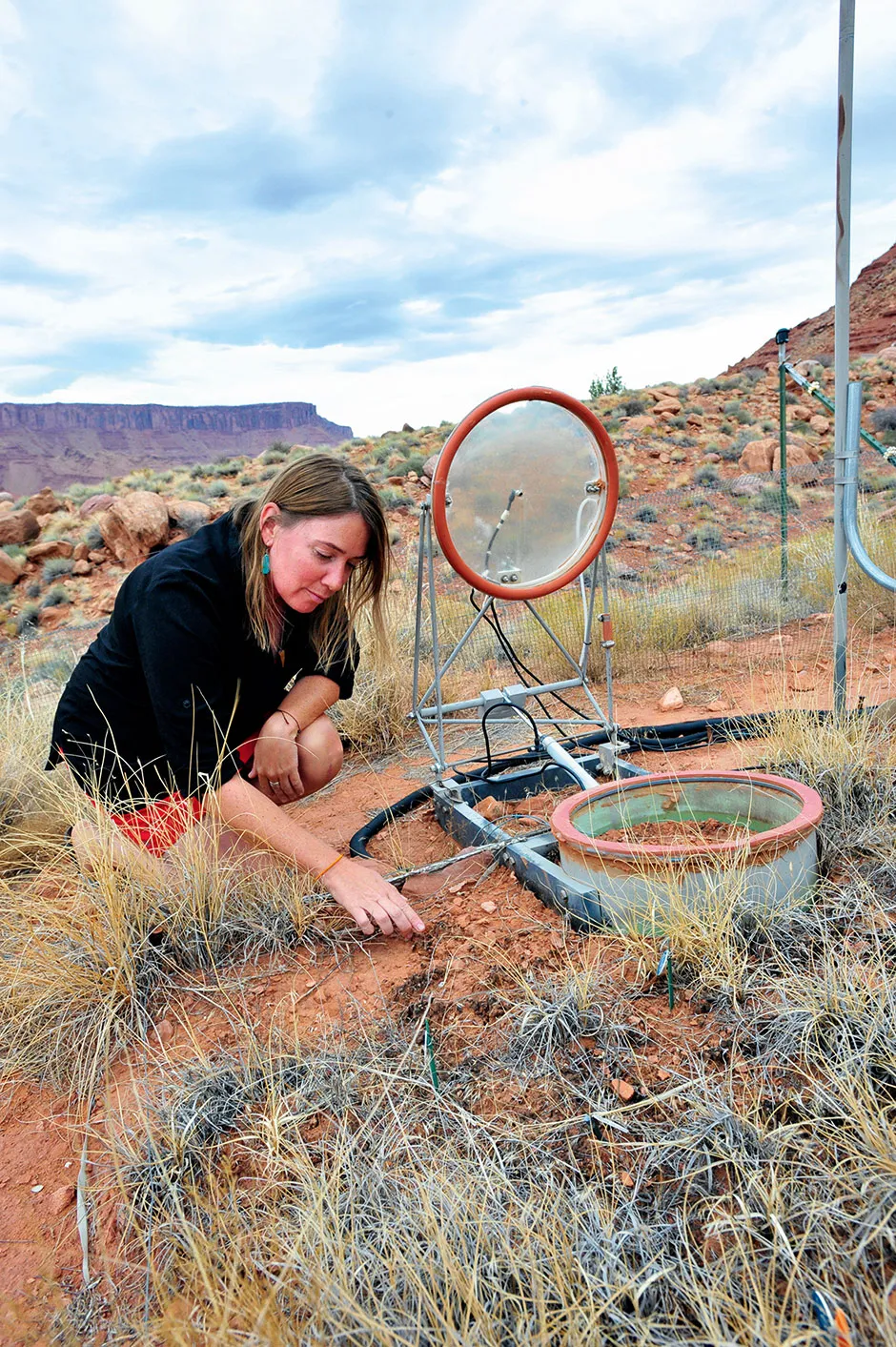
Although we may think of deserts as parched and lifeless, they are home to one of the richest and most underappreciated ecosystems in the world.
Biological soil crusts, or ‘biocrusts’, are a community of lichens, mosses and cyanobacteria that live on the soil surface. Just like plants, biocrusts influence atmospheric carbon dioxide levels via photosynthesis and respiration, yet little is known about their role in climate change.
In temperatures of more than 40°C, Dr Sasha Reed from the United States Geological Survey checks over a unique experiment. Once an hour, the lid automatically closes on this small sample of biocrust, and carbon dioxide levels are recorded.
There are 60 such plots scattered around the desert of the Colorado Plateau near Moab, Utah, and some of them are also heated using infrared lamps to mimic future climate change scenarios. “To know what these plots are doing every hour for years is just incredible,” says Reed.
So far, 15 years’ worth of data has been collected, and the results are showing that the biocrusts are struggling as the planet warms, which could have knock-on effects across their desert habitat.
- This article first appeared in issue 353 of BBC Science Focus–find out how to subscribe here